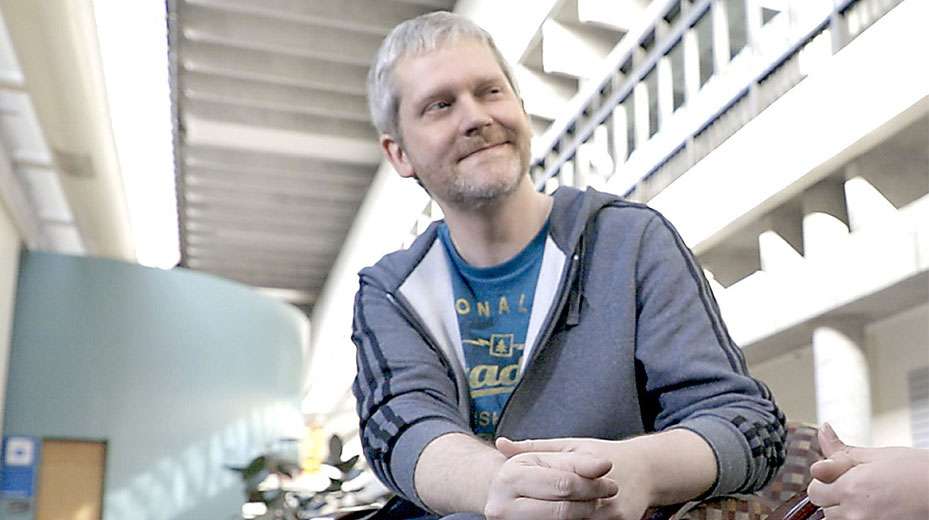Psychodynamic therapy is an approach that involves facilitation a deeper understanding of one’s emotions and other mental processes. It works to help people gain greater insight into how they feel and think.
By improving this understanding, people can then make better choices about their lives. They can also work on improving their relationships with other people and work toward achieving the goals that will bring them greater happiness and satisfaction.
Psychodynamic therapy is rooted in psychoanalytic theory but is often a less intensive and lengthy process than traditional psychoanalysis. While psychoanalysis tends to focus a great deal on the patient and therapist relationship, psychodynamic therapy also places a great deal of emphasis on a patient’s relationships with other people in the outside world.
What Is Psychodynamic Therapy?
Psychodynamic therapy is a form of talk therapy. It is based on the idea that talking to a professional about problems people are facing can help them find relief and reach solutions.
Through working with a psychodynamic therapist, people are able to better understand the thoughts, feelings, and conflicts that contribute to their behaviors. This approach to therapy also works to help people better understand some of the unconscious motivations that sometimes influence how people think, feel, and act.
This approach to psychotherapy can be helpful for dealing with mental or emotional distress. It can help promote self-reflection, insight, and emotional growth.
By better understanding your emotional patterns and their roots, you are better equipped to manage your problems and develop coping techniques that will help you both now and in the future.
Uses
While it is similar to psychoanalysis in many respects, it is often less frequent and shorter in duration. Like other forms of therapy, it can be used to treat a variety of mental health problems.
- Anxiety
- Depression
- Eating disorders
- Interpersonal problems
- Personality disorders
- Psychological distress
- Post-traumatic stress disorder
- Social anxiety disorder
- Substance use disorders
Factors that may impact what type of treatment is used include cost-effectiveness, availability, patient preferences, and the severity of the symptoms the person is experiencing. While cognitive-behavioral therapy (CBT) is a popular and effective approach, evidence suggests that psychodynamic therapy can be just as effective for many conditions.
Online therapy is another option that you might consider. Some research also suggests that online psychodynamic therapy may be as effective as online CBT.
How It Works
Psychodynamic therapy helps people recognize repressed emotions and unconscious influences that may be affecting their current behavior. Sometimes people act in certain ways or respond to others for reasons that they don’t really understand.
Psychodynamic therapy helps people learn to acknowledge, bear, and put into perspective their emotional lives. It also helps people learn how to express their emotions in more adaptive and healthier ways.
Important Characteristics
Some important aspects of psychodynamic therapy include:
- Identifying patterns: Psychodynamic therapy helps people learn to recognize patterns in behavior and relationships. People often develop characteristic ways of responding to problems without really being aware of these tendencies. Learning to spot them, however, can help people find new approaches to coping with problems.
- Understanding emotions: Research has found that psychodynamic therapy is useful for exploring and understanding emotions. Through gaining insight into emotional experiences, people are better able to recognize patterns that have contributed to dysfunction and then make changes more readily.
- Improving relationships: Relationships with others are a key focus of psychodynamic therapy. In working with a therapist, people are able to understand how they often respond to others.
The therapeutic relationship itself can serve as a way to look into the relationships a person has with other people through a process known as transference. This gives people an immediate “in vivo” way to explore and then change their pattern of responses in order to improve their relationships.
How Effective Is It?
How effective is psychodynamic therapy and how does it compare to other forms of treatment?
Assessing the efficacy of psychodynamic therapy presents some challenges, but research does suggest that it can be useful in the treatment of a variety of psychological problems.
One reason that it may be difficult to assess the full efficacy of psychodynamic therapy is that many of the changes it produces can be tough to measure.
While it is relatively easy to measure changes in specific acute symptoms, it is much more difficult to measure underlying personality changes, noted researcher Jonathan Shedler in a press release by the American Psychological Association (APA).
Despite this difficulty, research supports the efficacy and use of psychodynamic therapy to treat a variety of conditions.
- One notable review published in the journal American Psychologist concluded that the evidence supports the efficacy of psychodynamic therapy.
- Another study found that psychodynamic therapy could be at least as effective as cognitive-behavioral therapy (CBT).
- A 2017 review published in the American Journal of Psychiatry concluded that psychodynamic therapy was as effective as other established treatments. However, the authors of the study suggested that further research was needed to determine who benefited the most from this type of treatment.
What You Can Expect
If you decide to try psychodynamic therapy, you may meet with your therapist weekly to a few time each week. Each session typically lasts for around 45 minutes and you will continue to see your therapist for several months. In some cases, you may keep having sessions for a year or longer.
During psychodynamic therapy, people are often encouraged to talk about anything that might be on their minds. This might include things they are currently experiencing or memories of things that have happened in the past.
One form of psychodynamic therapy known as brief psychodynamic therapy is designed to produce results more rapidly, often in 25 to 30 sessions. In this shorter-term form of treatment, people may initially determine a particularly emotional area where they want to focus on.
Long-term psychodynamic therapy may take a year or longer and involve 50 or more therapy sessions.
A Word From Verywell
If you are experiencing symptoms of a mental health condition, talk to your doctor or mental health professional. They can make a diagnosis and recommend treatment options that may be best for your individual needs. Psychodynamic psychotherapy may be a good fit for you.
Psychodynamic therapy can help people improve their quality of life by helping them gain a better understanding of the way they think and feel. The idea is that this will improve their ability to make choices, relate to others, and forge the kind of life they would like to live.
When most people think of therapy, the thoughts and images that come to mind tend to be those related to psychodynamic therapy. This is because psychodynamic therapy is based on the work of Sigmund Freud, who many people know as the “father of psychoanalysis.”
Although the American Psychological Association identify five general categories of therapy — with many more subtypes — most types have roots that are traceable to Freud’s groundbreaking work.
Keep reading to learn more about psychodynamic therapy, including its origins, how it works, and its potential benefits.
What is it?

Share on Pinterest
Credit Image: PavelIvanov/Getty Images
Psychodynamic therapy is a talking therapy. This means that it is based on the concept that talking about problems can help people learn and develop the skills they need to address them.
It is an approach that embraces the multifaceted aspects of an individual’s life. It strives to help people understand the sometimes unknown or unconscious motivations behind difficult feelings and behaviors.
Having this insight can lead to symptom relief, help people feel better, and allow them to make better choices.
How does it work?
Psychodynamic therapy is based on the following key principles:
- Unconscious motivations — such as social pressure, biology, and psychology — can affect behavior.
- Experience shapes personality, which can, in return, affect an individual’s response to that experience.
- Past experiences affect the present.
- Developing insight and emotional understanding can help individuals with psychological issues.
- Expanding the range of choices and improving personal relationships can help people address their problems.
- Freeing themselves from their pasts can help people live better in the future.
Transference and countertransference are also important. With this approach, the client will transfer their feelings toward someone onto the therapist, and the therapist will redirect these feelings back toward the client. It can take place without the client’s awareness, and many therapists have varying approaches to this concept.
In psychodynamic therapy, the relationship between the therapist and the client is very important. It provides a container in which people can gain insights into themselves, their pasts, and their feelings. They can develop a better understanding of how they see the world and the ways in which all these factors affect their experiences.
With the help of a therapist, people undergoing psychodynamic therapy will work to understand their feelings, beliefs, and childhood experiences. The goal is to help people recognize self-defeating patterns, explore new ways of being in the world, and help people feel better.
A psychodynamic approach to therapy can work with individuals, couples, families, and in group therapy situations.
Because its focus tends to be on relationships and understanding thoughts and feelings, which people may have avoided confronting, psychodynamic therapy can be time consuming.
Short-term psychodynamic therapy generally lasts for 25–30 sessions over a period of 6–8 months, while long-term psychodynamic therapy — according to one study — may last for longer than a year or span more than 50 sessions.
History and origins
Psychodynamic therapy grew out of the theories of Sigmund Freud. However, it has evolved considerably from the 19th-century model.
Early leaders in the field who contributed to the development of this approach include Carl Jung, Melanie Klein, and Anna Freud.
In its earlier stages, therapy could last for years, with a person even having several therapy sessions per week.
Practitioners typically had a medical background and a paternalistic approach.
Is it effective?
Measuring the impact of treatment for psychological issues can be complicated. That said, there is evidence to suggest that psychodynamic therapy works for the following conditions:
- Depression: Studies indicate that it can help people address recurring life patterns that play a part in their depression.
- Social anxiety, social phobia, and panic disorder: Studies have found promising results and improved remission.
- Anorexia nervosa: Strong evidence suggests that it promotes recovery from anorexia nervosa.
- Pain: Unexplained chronic and abdominal pain respond well to this therapy, data suggest.
- Borderline personality disorder: Studies have found structured, integrated, and supervised treatment to be effective.
- Psychopathological issues in children and adolescents: Researchers have found psychodynamic treatment to be effective overall in reducing symptoms of psychopathological issues in children aged 6–18 years.
Experts report that psychodynamic therapy can also improve people’s lives by helping them:
- strengthen their self-understanding to break self-defeating cycles
- address issues with avoidance
- improve their understanding of relationship dynamics
One of the most intriguing benefits of psychodynamic therapy, according to multiple studies, is that they keep on coming.
What this means is that individuals who undergo this kind of treatment continue to show improvement months after they complete it.
Vs. other forms of therapy
Although there is variety in the results, most studies have found psychodynamic therapy to be roughly as effective as two of the most common other forms of therapy: cognitive behavioral therapy (CBT) and medication.
CBT
CBT is a popular form of therapy that focuses on helping people adopt healthier ways of thinking and acting by enhancing their awareness of their choices.
Medication
Antidepressants and other medications have proven effective in treating depression and other mental health conditions.
Anyone who thinks that they may be experiencing a mental health condition should speak to a doctor to determine which type of antidepressant is most suitable for them.
Limitations
Although psychodynamic therapy can be an effective form of treatment for many mental health conditions, the researchers behind one report found that it may be less effective for the following conditions:
- post-traumatic stress disorder (PTSD)
- obsessive-compulsive disorder
- drug addiction
- psychosis
Psychodynamic therapy can still be effective for PTSD in some cases, though there is no strong evidence for this.
That said, this same report points out that results from many of the studies into various treatments for mental health conditions tend to lean toward the author’s “theoretical orientation,” or to coincide with the author’s affiliation.
Therefore, the researchers call for more systematic evidence around these treatments. They also highlight the fact that the effectiveness of psychodynamic treatment can greatly depend on the psychiatrist themselves.
Overall, it is clear that more studies into various forms of psychotherapy are necessary. This will help determine which type might be best suited for which individuals and which psychiatric conditions.
Summary
Psychodynamic therapy is a form of talking therapy that has proven effective in helping people dealing with depression, anxiety, pain, and relationship issues.
This treatment approach helps people see what is behind their problems by giving them a better understanding of their unconscious feelings, thoughts, and past experiences.
Developing these psychological skills helps people make better choices and feel better in the long-term.




